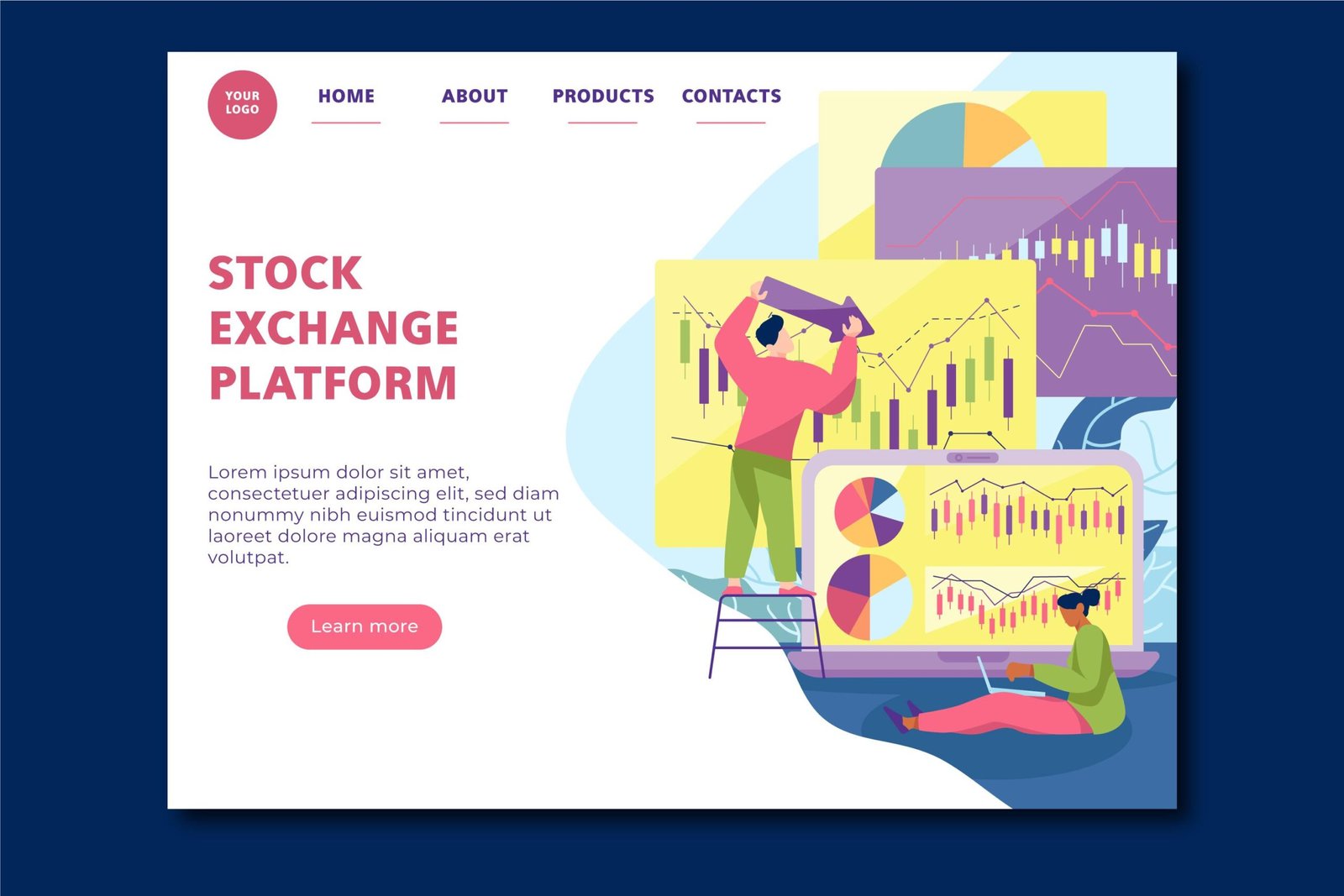Business, on its basic level, means purchasing and selling goods and services and can be done on a large scale. It defines the system of relations that is consequent on business exchanges, consisting of the processes of production, distribution, and consumption of goods and services within an economy. This activity is not as simple as exchanging cash for merchandise or services; it even involves principles of economics, laws, technological innovations, and people’s behaviors. Business is the key driver of economic growth globally through embarking on trade, which is the main backbone of the development of the economies.
The Historical Evolution of Commerce
Business has a rich background that can be traced back to antiquity. The first types of business transactions were basic barter methods, where goods were exchanged for other goods. For instance, a farmer would swap poultry with a blacksmith for utensils crafted from iron. A significant drawback of barter was established in time and evolution, so money was created as an exchange medium. This innovation made trade more flexible and has become the base of most modern commercial acts.
Empires and the establishment of trade paths also added to the advancement of the commercial perspective. A good example is the Silk Road, a central passage connecting the East and West, enabling product trade and exchanging culture and information. Maritime exploration started during the 15th and 16th centuries, which brought about the globalization of commerce by establishing new trade routes between distant areas of the geographical world.
The Industrial Revolution was the beginning of tremendous changes in commerce. Some of these are the Industrial Revolution process that enabled the mechanized production of goods, transportation systems, and the formation of urban areas that revolutionalized the production and distribution of goods. Factories were developed, and the construction of railways and steamships made transporting goods at large distances possible, increasing commerce and its diversity.
The Role of Technology in Modern Commerce
As for the commercial revolution, using advancements in the world, technology has led to a tremendous impact in never-before-seen ways. It is a new system for shopping since Internet technologies and all sorts of digital technologies have enabled people to do business on the Internet. Today, people owe thanks to e-commerce intermediaries like Amazon, Alibaba, eBay, and other online retail stores wherein, with some clicks, one can order products from any part of the world.
Also, the payment feature, which has improved with the presence of systems such as PayPal, Venmo, and other cryptocurrencies, increases commerce’s flexibility. The following are some of how these technologies have impacted global trade: These technologies facilitate business operations across national boundaries and consumer trade. Besides, the improvements made to transporting goods through logistics and supply chain management have improved the process of commerce, whereby products are delivered to consumers faster at cheaper rates.
Also, in the commercial field, advancements in technology, such as artificial intelligence and big data, have helped several companies improve consumer behavior data regarding prices to charge and marketing in general. These include cases where artificial intelligence has been incorporated in recommendation systems, like the one similar to the e-commerce setting, which is used to influence the consumer and propose products of his interest according to his previous purchase history.
The Different Types of Commerce
Commerce can be broadly categorized into several types based on the nature of the transactions and the parties involved. In a nutshell, commerce can be divided by the kind of business and people involved in a particular industry.
Business-to-Business Commerce:
This type of commerce involves selling products and services from one company to another. For example, firms may offer sub-assemblies for sale, which are utilized to form other products or services. A business may sell accessories such as headsets, Bluetooth sets, or MP3s to a company mainly selling smartphones. Here, the first business provides products that enable the second business of the same chain to offer its services or products.
Business-to-Consumer Commerce:
This is the business model in which a firm markets its products or services directly to an ultimate user. This could be by opening physical shops, such as retail shops, or through online-based stores, such as e-shops. Examples include an online store, a restaurant, or a hair salon, by which the stationery products or services are sold to the final consumer.
Consumer-to-Consumer Commerce:
C2C commerce refers to buyers selling goods and services directly to the end consumer. A web store is one of the Widely known and easily recognizable examples of such a model, where customers buy and sell products, like online marketplaces.
Consumer-to-Business Commerce
This is less common when consumers sell products or services to businesses. It could also mean self-employment, where someone works as a contractor trading their services to firms or posts a picture, design, or content on the Internet to companies who advertise their products.
Electronic Commerce

Those are primarily web-based deals and clients’ online interactions by buying and selling goods or services. In the last two decades, e-commerce has increased as consumers gain access to smartphones, Internet services become more prevalent, and consumers enjoy convenience. Online shopping implies purchasing and selling products through intermediary online markets electronically referred to as e-commerce, which may comprise B2B, B2C, C2C, and C2B transactions.
Mobile Commerce
They carry out business matters through modern touchscreen communication gadgets such as mobile phones, smartphones, and personal digital assistants. Another proven fact is the increased popularity and importance of ‘mobility’ technologies in commerce, where people shop on the move with the help of smartphones and applications.
Therefore, the paper aims to highlight why commerce is crucial in the world economy.
Trade is the lifeline of the world economy, facilitating movement and the growth and development of the products to be traded and the services to be provided. It enhances efficiency, creativity, and options for the buyer as it opens new opportunities for business entry and expands. The consumer access to various products.
Commerce also plays a vital role in creating jobs. Many employment opportunities exist across several areas, entailing commerce, from retailers to logistical workers. E-commerce has, in particular, created many new jobs for digital marketers, web developers, and data analysts.
Commerce also encourages international trade, which is essential for a nation’s performance. Trade helps a country specialize in producing goods. Services where it enjoys a comparative advantage, enabling efficient resource allocation and improving living standards.
Challenges Facing Modern Commerce
Even though commerce has indeed given more economic merit, there are still some significant hindrances that are faced in commerce these days, such as:
Cybersecurity Threats:
The growth of e-commerce has also Aligned with the rise of cyber threats. Companies and customers are Compelled to be open to danger regarding data breaches, identity theft, and online fraud. One of the critical concerns for the future of commerce is security in online transactions.
Regulatory Challenges:
With increased globalization, every business has to work out a maze of regulations in various countries. Matters related to tax compliance, trade restrictions, and data privacy laws can easily overwhelm an organization operating its business in more than one state or country.
Sustainability Issues:
Much of it is retail and logistics, and the business has increasingly become an ecological concern. Goods production and transportation with waste contribute to the deterioration. The environment through increased carbon emissions, waste products, and resource depletion. Businesses are increasingly compelled to go green to be economically viable and reduce environmental footprints.
Market Competition:
The ease of entry into e-commerce has brought about fierce competition between companies. It calls for the company to innovate and make a difference constantly. If it needs to remain competitive amidst a crowd. This is one burning pressure that small-scale businesses face because they cannot afford large corporations’ resources.
Evolving Consumer Behavior:
Changes in consumer preference, coupled with changes in technologies, culture, and economic conditions, continue to alter consumer behavior. Thus, businesses have to be sufficiently agile to meet their customers’ changing needs.
Commerce in the Future

It would, therefore, be proper to state that the future of commerce is bound to be affected as below: It would be, therefore, appropriate to state that the near future of commerce is likely to be impacted in the following ways;
The Rise of the Metaverse:
The idea of the metaverse is finally coming of age. It is a virtual environment where users meet each other and use simulated scenarios. Organizations are still determining how trade is possible in the metaverse, in which virtual goods, services, and events form a novel economic system.
Sustainability and Ethics in Consumption:
Today, the environmental trend has captured the consumers’ attention, and hence, there is pressure to produce more products that are more ecologically and ethically manufactured. Organizations with a steady and clear supply chain will gain a competitive advantage.
Artificial Intelligence and Mechanization
One thing that can be stated is that AI and automation will continue integrating into commerce. Thus, this technology will be extended to cover almost every service level, from ground-level services like purchase orders to supply chain solutions.
Omnichannel retailing:
The combination of web and physical-based shopping experiences has now come to be referred to as omnichannel retailing. This would mean consumers go out there with a reinforcement of shopping expectations irrespective of whether it is done online, in physical establishments, or even with the help of mobile applications. Any organization that wishes to have excellent success rates must ensure that it harmonizes its various outlets to make sales.
Globalization and Localization:
Strangely enough, the growing wave of globalization has also been responded to by calls for intensifying the localization process.
In light of globalization, the corporate world emphasizes that the local markets must set the tone regarding product portfolios, communication media, and customers. Indeed, the extent to which both globalization and localization factors are satisfied will likely present much of a challenge to most international organizations in the future.
Conclusion
Commerce drives the lifeblood of modern economies, which stimulates further growth, innovation, and prosperity. From ancient barter systems to digital marketplace solutions.Commerce has always been one of human exchange’s most dynamic and ever-changing features. In the future, commerce will continuously find new forms with the changes in technologies, consumer tastes, and global challenges. Companies that rise to this test of time by promoting sustainability, innovation, and consumer satisfaction will be best positioned to thrive in the competitive 21st-century landscape.
FAQs on Commerce
1. What is commerce?
This refers to exchanging products and services to create value and profits, such as purchasing business inventories. In it, several products and services are exchanged between business players or between businesses and buyers.
2. What are the various kinds of commerce?
B2B:
It is business a business transaction.
B2C:
They are business to consumer, or what can be shortened to b to c transactions.
C2C:
A Consumer-to-Consumer transaction is even more preferable and can occur through some websites.
C2B: C2B:
Consumers sell their products to business organizations.
3. What were the effects of technology on commerce?
New tools such as e-commerce websites, digital payments, artificial intelligence, and big data have emerged in commerce. These tools have enabled transactions from anywhere globally, improved efficiency, and enhanced customer relations in the organization.
4. What is E-commerce?
E-commerce, More fittingly electronic commerce, is Trading goods and services through computers or the Internet. It includes all business activities Via the Internet, such as business-to-business, business-to-consumer, consumer-to-consumer, and consumer-to-business.
5. What are some of the challenges to modern commerce?
The risks are cybersecurity, contradictory regulations, sustainability, stiff market competition, and constantly shifting customer trends.
6. In what manner does commerce impact the economy of the world?
It is essential since it fosters trade, supports the economy’s growth, enhances employment opportunities, and divides labor, among other benefits. It also helps to reach more market destinations and sources of supply for many countries worldwide.











